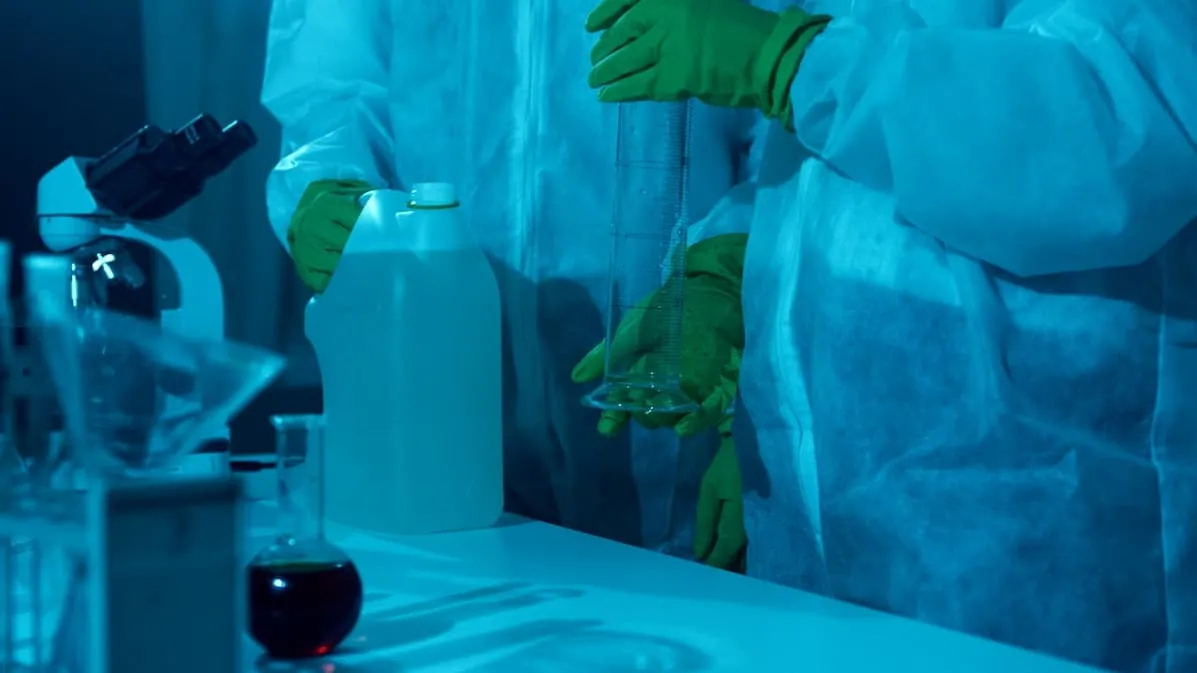Protection against harmful chemical agents is an issue that should be kept in mind not only in the heavy chemical, pharmaceutical or paint industry, but also in the food industry, laboratory work, work with asbestos, agricultural work requiring the use of chemicals, and even in domestic conditions, when contact with various types of substances and detergents poses a threat to human health. The selection of appropriate protective clothing against chemical agents, i.e. the so-called chemical-protective, chemical-resistant or anti-chemical clothing, is the key to guaranteeing the safety of workers exposed to continuous contact with substances present in the form of gases, vapors, liquids, dusts and solids. What requirements should this type of clothing meet and how does it provide protection for the body against chemicals?
Labeling of clothing protecting against chemicals
As stated in Directive 89/686/EEC, clothing that provides protection against hazardous chemical agents is qualified as a category II or category III personal protective equipment, that is, a means of direct protection against life-threatening hazards or hazards that can cause serious and irreversible damage to health. For this reason, the proper selection of it to the conditions of the workplace is much more important here than in the case of work that threatens minor damage to health or even just dirt. Chemo-protective clothing should be marked with the appropriate pictogram and comply with standards specific to protection against a particular type of hazardous agents.
Division of chemical-resistant clothing by type of hazard
European standards, on the basis of which the degree of protection guaranteed by clothing when in contact with certain chemical agents is determined, make a division of anti-chemical clothing based on the intensity of the chemical substance and its state of aggregation. As a general assumption, it is assumed that chemical-resistant clothing can be divided into 6 types, with Type 1 being the clothing that guarantees the highest degree of protection, and Type 6 being the clothing with the least degree of protection suitable for work in the least exposed environment.
TYPE 1: Gas-proof clothing. Clothing that protects against chemicals present in the form of gases, liquids, aerosols and solid particles is referred to as type 1 gas-tight clothing. These garments demonstrate compliance with EN 943-1. However, in this category it is still possible to distinguish type 1-ET, within which appears gas-tight clothing designed for chemical emergency services, meeting the objectives of EN 943-2.
TYPE 2: Non-gas-tight clothing is a garment that protects against chemicals present in the form of gases, liquids, aerosols and particles, while its design does not ensure complete tightness. The requirements to which non-gas-tight garments are fitted are included in EN 943-1.
TYPE 3: Liquid jet protective clothing is, as the name implies, clothing that protects against chemical agents present in the form of liquids under pressure. These garments meet the requirements of EN 14605 + A1.
TYPE 4: Spray jet protective clothing guarantees protection against chemicals in the form of spray (not applicable to pressurized liquids). The applicable standard here is again EN 14605 + A1.
TYPE 5: Protective clothing against particulate matter is primarily dust-proof clothing that guarantees protection against chemicals in the form of dust, meeting the EN 13982-1 standard.
TYPE 6: Garments with limited protection against liquid chemicals are the most basic variant of anti-chemical garments, protecting mainly against spraying. These garments should comply with EN 13034.
Other ways to divide anti-chemical clothing
The level of resistance of chemical protective clothing depends primarily on the material from which it is made. In addition, precisely because of the resistance of the material from which the anti-chemical garment is made, it is possible to divide the garment into resistance classes in accordance with EN ISO 6529.The class depends on the breakthrough time, that is, the time required for the molecules of the chemical substance to penetrate the material. Thus, class 1 - is clothing for which the breakthrough time is greater than 10 min, class 2 - 30 min, class 3 - 60 min, class 4 - 120 min, class 5 - 240 min, and class 6 - 480 min.
With regard to the type of chemical substance against which the item of clothing protects, within the framework of chemical-resistant clothing are distinguished:
- Acid-resistant clothing that protects against inorganic acids and bases (hydrochloric acid, sulfuric acid, nitric acid, sodium base, potassium base),
- Clothing that protects against organic acids (lactic acid, acetic acid, formic acid),
- Oil-resistant clothing protecting against oils (vegetable oils, animal oils, mineral oils),
- Clothing protecting against plant protection products,
- Clothing protecting against paints and varnishes,
- Clothing protecting against organic solvents (e.g. benzene, acetone, toluene).
How to select chemo clothing?
In order to properly match chemical-protective clothing to a particular workplace, first of all, it is necessary to carefully analyze the type of hazards present in the workplace, and therefore both the type of chemical substance and the form under which it occurs. It is also worth remembering that chemicals can change their state of aggregation under the influence of temperature, which will mean that the employee will need to be protected against both types of chemicals.
Attention should also be paid to other non-chemical hazards - protective clothing should meet the requirements related to the risk of cutting, dirt, heat or other harmful factors in the workplace. Standards for anti-chemical clothing specify only the minimum requirements for the mechanical and protective parameters of clothing, so you should always make sure that the chosen model will guarantee an adequate level of protection for the worker in the position for the entire period of contact with the harmful agent.
You should also keep in mind additional personal protective equipment, including respiratory protection, chemical-resistant gloves, a face shield and or an eye shield. Only by combining both categories can employees be guaranteed comfortable and safe working conditions that comply with both OSHA regulations and industry safety standards.






